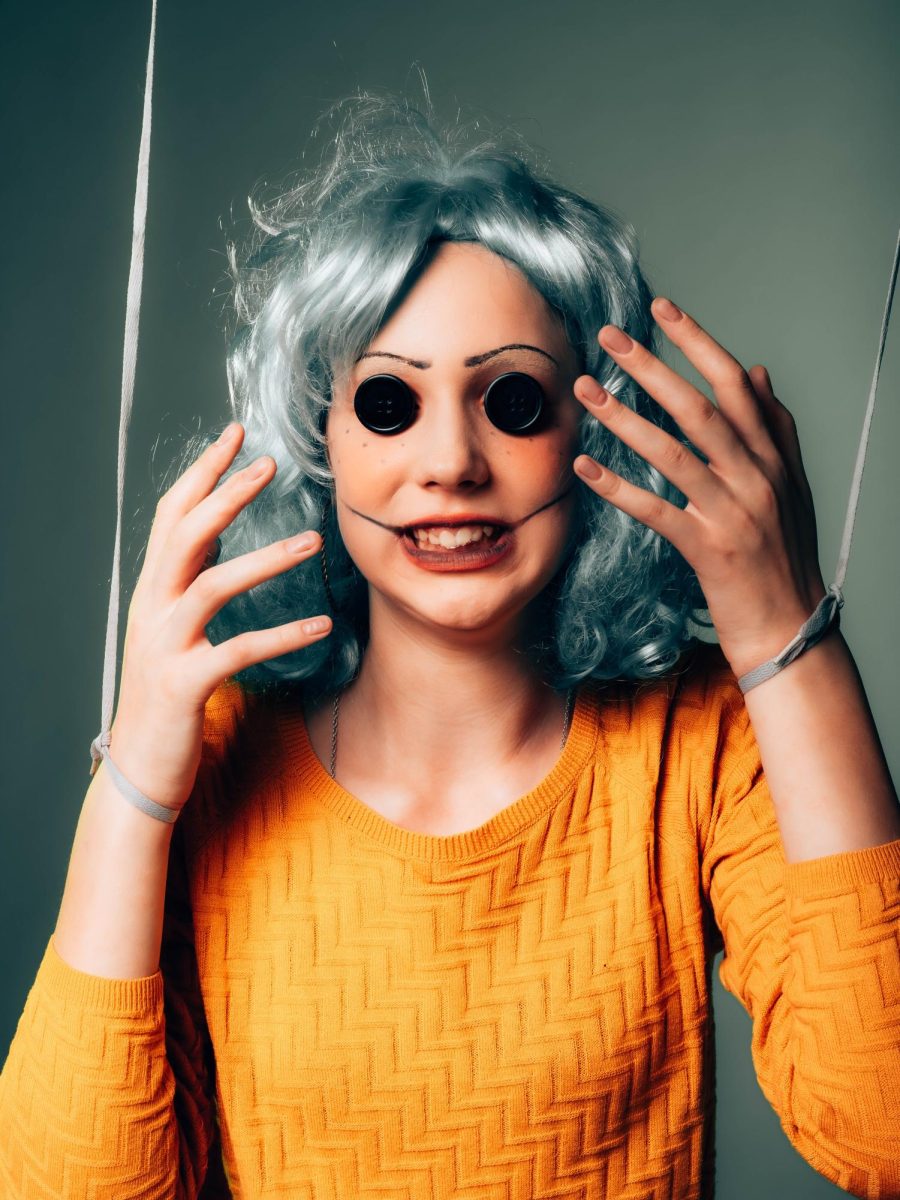Somewhere between animated and live-action lies an uncomfortable medium where a feeling of strangeness mixed with intrigue occurs.
Horror films and fiction are populated by a multitude of examples of the uncanny. Consider, for instance, characters who are almost alive and in human form, but transform into something subhuman — zombies, vampires or humans under demonic possession. Others include mirrors, eerie repetition of numbers and familiar places like childhood homes revealing something hidden.
Jules Buckner ‘25 named the 2009 fantasy animation film “Coraline” as an uncanny movie that scared him as a kid. “We grow up with innate ties to our family that make us dependent on them,” said Buckner. “In ‘Coraline,’ the family dynamic is almost flipped upside down. It becomes way more terrifying because beliefs that we have so much emotional attachment to turn out to be just evil.”
Charlotte Fassnacht‘26 identified the 2019 horror film “Us” as an uncanny film that goes beyond the scope of typical horror. “What makes movies with the uncanny distinct from others has to do with the director’s perspective and approach to it,” said Fassnacht. “I really like [‘Us’] because it has comical moments, which add … [a] more realistic dimension to the movie by making light of a horrific thing.”
The uncanny is a phrase that most teenagers do not recognize on its own. However, recent TikTok trends of creators doing their makeup to imitate a humanoid robot is a prime example of the uncanny valley, which describes the unsettling horror of encountering a robot with human-like features and characteristics.
Uncanniness and its psychological context reveals ideas about the human psyche that go further than a social media trend.
Sigmund Freud explored the idea of the uncanny — the psychological experience of an individual or incident that is not just strange, but also terrifying in an oddly familiar way. The phenomenon describes when something familiar is found in a taboo or unsettling context.
Freud is widely known as the pioneer of psychoanalysis, a psychological theory and treatment aiming to identify repressed feelings, thoughts and memories that negatively impact someone’s life.
The uncanny was first presented by German Psychiatrist Ernst Jentsch in his 1906 essay, “On the Psychology of the Uncanny.” Jentsch emphasizes that the uncanny arises from experiencing uncertainty. Because this unpredictability did not fit Freud’s definition, he purposefully left it out of his essay called “Das Unheimliche,” which sought to expand on Jentsch’s ideas 13 years later.
Freud’s “Das Unheimliche” investigates the uncanny’s intersection with horror films and fiction and how this relationship conjures a strong mirroring between fiction and reality.
The Unconscious: Stories and Theories Teacher Ben Slater said, “[‘Das Unheimliche’] does not have some reductive theory of what it is that drives us, but mostly that there are layers of how we experience the world in our earliest years that are underneath and are still sort of alive.”
One of the ideas in Freud’s essay that differs from Jentsch’s is the contrary meanings of unheimlich and heimlich.
Freud pointed out that in his native German language, the word heimlich has a deeper connotation than its English translation. One definition for heimlich is a cozy feeling of security a person feels within their home. But, according to Freud, the deeper German meaning implies that what is being described as familiar is also protected and concealed from the outside world.
The unheimlich — or the uncanny — are things that are unfamiliar or hidden, suggesting that they are threatening or uncomfortable.
“It is a sense of being brought home, but to home being an unconscious place that reflects the original order in which we experienced the world,” said Slater. “You can think about the horror of what you felt was not home but actually is your home or vice versa.”
English Teacher Ana Cecilia Alvarez studied Freud’s essay in a reading group and spoke about the significance of language in Freud’s ideas. “When I look back on reading [‘Das Unheimliche,’] the evident tension between the heimlich and unheimlich really hit me. He starts with the [words’] [etymologies] and shows that [by exploring these ideas] we are already betraying our understanding of these concepts in some ways.”
Alvarez went on to explain how letting go of familiarity is essential to the uncanny. “Freud is saying that [the uncanny] emerged from our most essential and familiar relationships,” said Alvarez. “Our whole psychic structure goes back to these formative moments that also have repressed feelings buried within them.”
Outside of linguistic analysis, “Das Unheimliche” covers how the effects of the uncanny are represented in literature and fiction. Stemming from his interest in psychoanalysis, Freud’s perspective on the uncanny connects to unfulfilled wishes from our earlier years. His writing typically mentions aggressive or sexually charged desires that rise to the surface as an adult, some of which are included in “Das Unheimliche.”
Horror fan Harper Lind ‘27 noted that parts of the uncanny relate to growing out of childhood. “As a teenager, I’ve really come to appreciate uncanny [bodily] horror because for me it really represents the discomfort and lack of synchrony that I’ve felt with my body,” Lind said. “Like, it’s me, but it’s not an image I [have] had time to get used to.”
With the uncanny being rooted in the idea that what is familiar can also be strange, the concept is employed in various horror films and narrative writings.
The horror genre often aims to expose common emotional and psychological fears to create discomfort. This is done by uncovering parts of the human psyche that most people have repressed for personal reasons or due to societal pressures.
Additionally, Freud refers to the uncanny as part of what has been repressed. Although this term is not contemporary, many adults and teens have begun to recognize it for its association to horror and uncanny valley.
“I think the uncanny is scary to us because it twists something that we are familiar with, like objects or individuals from childhood, as something that is unsettling,” said Lind. “When we think about our own childhoods and do not remember being scared by it, we don’t expect ourselves to be in that sort of situation [of fear].”
Buckner talked about repression, or the unconscious blocking of unwanted memories, that derives from the uncanny. “Repression is something that we experienced but did not really have the capacity to process [as children],” said Buckner. “Because of that, the feelings [were] pushed down and never processed, which made them stick [in our psyche] and affect us in ways we do not know.”
Nonetheless, the most significant example of the uncanny due to its recent popularity on social media is the idea of uncanny valley. From Tiktok trends of impersonating robots that look like humans to manufactured pictures or portraits, many people have recently begun to share their responses to these images.
While the uncanny is typically employed as a method to cause a sort of uncomfortable fascination by modifying once-familiar ideas, some people turn to the uncanny for comfort, playing with feelings of the uncanny and how frightening it is.
“Seeing a horror movie with [the uncanny] exposes things that we are ashamed of or want to keep within ourselves and puts it on a big screen,” said Lind. “It depicts them in a mesmerizing way that makes us feel seen and good about ourselves.”


